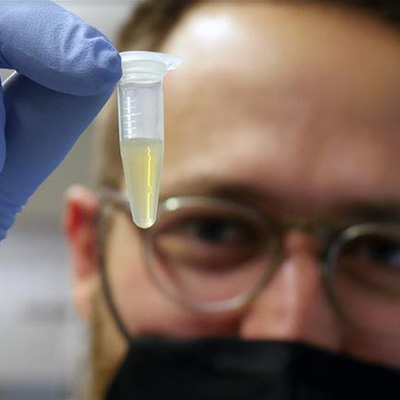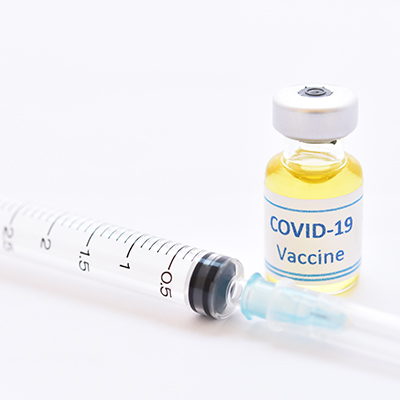September 3, 2020 -- A bioengineering technique that utilizes various naturally occurring sequences and de novo design of messenger RNA (mRNA) components was applied to develop an mRNA-based vaccine that could be highly effective against SARS-CoV-2, according to a new article published in Advanced Materials on September 2.
Vaccination is the most effective strategy to prevent viral infections in large populations. Recently, mRNA-based vaccines have emerged as potential candidates for SARS-CoV-2 because of their fast development and manufacturing processes.
To effectively express an antigen, mRNA requires several components including a 5' cap, a 5' untranslated region (5' UTR), an antigen-encoding sequence, a 3' untranslated region (3' UTR), and a polyadenylated tail. The UTRs are regulators for protein translation and with proper modification can be used to produce higher-than-normal protein levels.
UTRs from endogenous genes have been used to increase targeted protein expression. Alternatively, UTRs can be designed via de novo methods. Researchers from Ohio State University (OSU) proposed that systematic engineering of endogenous UTRs with de novo design may provide targeted applicability for mRNA vaccines in response to pathogens such as SARS-CoV-2.
Designing the best mRNA
The researchers screened endogenous UTRs in mammalian cells using bioinformatics analysis of global gene expression. They found that the mRNA from the murine Rps27a gene showed the highest translation capacity per mRNA molecule. It is a housekeeping gene that encodes one of the components of the ribosome 40S subunit. The gene has two different 5' UTRs (S27a-44 and S27a-25) that share the same 3' UTR. So, the team prepared two mRNAs based on these UTRs.
One of the 5' UTR mRNAs (S27a-44') had significantly increased activity compared to the other modified mRNAs. Next, an mRNA with this 5' UTR was constructed with multiple different 3' UTRs. However, these all decreased protein expression, so the researchers decided to use the original endogenous S27a 3' UTR for in vitro studies.
For de novo mRNA, the researchers designed 5' UTRs of different lengths: 10, 30, 50, 70, and 90 nucleotides. Based on relative luciferase activity, they selected 70 nucleotides for an optimal length of 5' UTRs. They also tested 5' UTRs with variable compositions of nucleotides.
The researchers found that 5' UTRs that consisted mostly of adenine, cytosine, and uracil with minimal guanine outperformed others. They selected the construct with high uracil content and minimal secondary structures (NCA-7d) for further study. For 3' UTRs, the team decided that a repeated sequence element 3 and U-rich element (R3U) was the best functional motif.
Together, comprehensive UTR engineering identified the optimal UTRs as NCA-7d as the 5′ UTR and S27a plus a functional motif R3U as the 3′ UTR (named as NASAR UTR). NASAR was 10-fold more potent than the original endogenous UTRs and five- to seven-times better than positive controls.
Designing NASAR mRNA encoding SARS-CoV-3 antigens
"We've been engineering messenger RNA for four years, and earlier this year we made some progress identifying a role for UTRs - and then COVID-19 happened," said Yizhou Dong, PhD, senior author and associate professor of pharmaceutics and pharmacology at OSU, in a statement.
The team prepared five NASAR mRNAs to express the spike, nucleocapsid, membrane, envelope, and receptor-binding domain (RBD) structural proteins/fragment of SARS-CoV-2 as the vaccine candidates. The NASAR mRNAs encoding either the spike protein or RBD fragment were delivered by lipid-derived TT3 nanoparticles to mice via intramuscular injection with a prime-and-boost strategy. The NASAR mRNA vaccine induced over 300-fold more anti-SARS-CoV-2 antibodies than that formulated by MC3, a delivery system approved by the U.S. Food and Drug Administration.
"If the current vaccines work well, that's wonderful. In case the field needs this, then it's an option. It worked as a vaccine is expected to, and we can scale this up very fast," said Dong. "For now, it's a proof of concept -- we've demonstrated we can optimize a sequence of messenger RNA to improve protein production, produce antigens and induce antibodies against those specific antigens."
This engineering strategy takes antigen design to a new level by making use of mRNA UTRs, noted the authors.
"For our application we tried to optimize the UTRs to improve the protein production process. We wanted as much protein produced as possible - so we can give a small dose of messenger RNA that produces enough antigen to induce antibodies against the virus," Dong said.
Even if the team's UTR modification strategy is not used for COVID-19, they noted that they are exploring the use of the technology for other therapeutics.
Do you have a unique perspective on your research related to immunology or protein engineering? Contact the editor today to learn more.
Copyright © 2020 scienceboard.net









